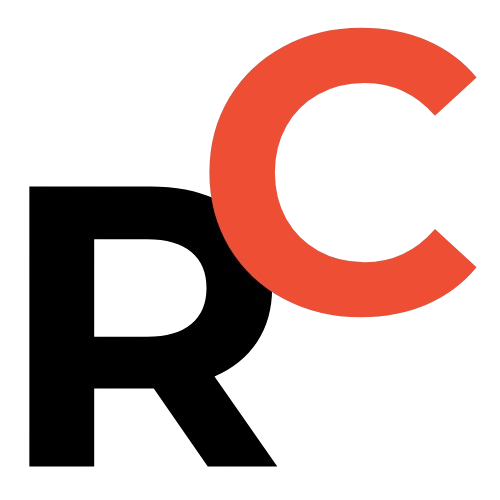
Stay competitive in the future of work by highlighting these key transferable skills on your resume. Each one can be applied across industries, roles, and levels — and they’re exactly what hiring managers are prioritizing in 2025.
1) Communication
Communication skills are listed on more than 35% of job postings, according to Jobscan’s analysis of over 10 million listings.
Communication is the ability to clearly express your thoughts, ideas, and feedback both verbally and in writing. This skill is essential across all industries, roles, and team environments.
Strong communicators also listen actively — a critical component of team harmony and decision-making. Effective communication helps reduce misunderstandings, improves collaboration, and boosts workplace productivity.
Communication skills examples for your resume:
Led cross-departmental meetings to communicate project goals, ensuring alignment and reducing misunderstandings by 30%.
Drafted and edited internal communications that improved team clarity and reduced project delays by 20%.
Managed client relationships by providing clear, concise, and timely updates, increasing customer satisfaction by 15%.
Delivered engaging presentations to senior leadership, which led to the approval of three new company initiatives.
Created onboarding guides for new hires, shortening ramp-up time by 40%.
2) Adaptability
In LinkedIn’s 2024 Future of Work Report, adaptability is among the top 5 soft skills desired by employers as companies deal with change at a faster pace than ever before.
Adaptability is your ability to adjust to new tools, environments, feedback, and evolving priorities. It’s a must-have for thriving in hybrid teams, tech transformations, or role changes.
Those who demonstrate adaptability are seen as resilient, resourceful, and growth-oriented.
Adaptability skills examples for your resume:
- Transitioned to remote leadership during the pandemic and maintained team KPIs across three quarters.
- Learned and implemented new CRM software in under two weeks to meet company-wide rollout deadlines.
- Took on cross-functional responsibilities during a departmental restructure, contributing to seamless operations.
- Shifted social media strategy mid-campaign due to algorithm changes, increasing engagement by 18%.
- Adapted customer onboarding processes after product updates, reducing churn by 12%.
3) Critical Thinking
The World Economic Forum predicts critical thinking will remain in the top 3 skills for 2025 and beyond.
Critical thinking is your ability to objectively evaluate information, identify patterns, and make data-informed decisions. It’s about thinking logically — not emotionally — when facing complex problems.
Hiring managers look for candidates who can use reasoning to solve issues independently and make smart decisions that move the business forward.
Critical thinking examples for your resume:
Analyzed customer service metrics and redesigned the escalation process, reducing complaint resolution time by 25%.
Identified inefficiencies in vendor onboarding and introduced a new system, improving turnaround time by 40%.
Conducted risk assessments that guided product go/no-go decisions with 90% accuracy.
Evaluated internal policies and proposed improvements that passed compliance audits.
Synthesized conflicting data sources to create actionable reports for leadership.
4) Problem-Solving
91% of employers value problem-solving when hiring, according to NACE’s 2024 Job Outlook survey.
Problem-solving is the skill of identifying a challenge, understanding its root cause, and coming up with practical solutions. It’s crucial in high-stakes and fast-moving environments.
Employers want to see how you address roadblocks, not just how you perform when things go smoothly.
Problem-solving skills examples for your resume:
Troubleshot and resolved a recurring software bug, reducing IT tickets by 35%.
Reworked logistics processes to eliminate delays, resulting in a 20% faster delivery rate.
Solved a customer service bottleneck by introducing a live chat feature that improved satisfaction scores by 15%.
Redesigned workflows after merging two departments, boosting productivity by 22%.
Initiated a cross-functional task force that resolved a product flaw in two weeks.
5) Collaboration
According to Gallup, organizations that foster collaboration are 21% more profitable.
Collaboration is the ability to work effectively within a team to achieve shared goals. It involves communication, respect, and contribution — not just getting along, but building something better together.
Hiring managers want people who can function in diverse teams, across functions, and even across time zones.
Collaboration skills examples for your resume:
Partnered with engineering and design teams to launch a customer-facing dashboard on schedule.
Co-led a sales and marketing alignment initiative that increased campaign efficiency by 30%.
Collaborated with international teammates to localize the product for five new markets.
Facilitated brainstorming workshops that improved ideation and speed to execution.
Supported remote teammates by creating centralized documentation and processes.
6) Digital Literacy
85% of jobs now require at least basic digital skills, according to the World Economic Forum.
Digital literacy means being comfortable with digital tools, platforms, and data — from spreadsheets to AI. It’s not just about knowing how to use tech, but understanding how to apply it to work smarter.
Employers are seeking candidates who embrace new tools rather than resist them.
Digital literacy examples for your resume:
Automated reporting tasks using Google Sheets scripts, saving 8 hours/week.
Built dashboards in Tableau to visualize key business insights for stakeholders.
Used HubSpot to manage customer pipelines and improve conversion rates by 25%.
Implemented SEO tools like Ahrefs and SEMrush to grow blog traffic by 3x.
Trained colleagues on productivity tools like Slack, Notion, and Asana.
7) Emotional Intelligence (EQ)
According to TalentSmart, 90% of top performers have high emotional intelligence, making it a key predictor of workplace success.
Emotional Intelligence (EQ) is your ability to understand, manage, and respond to your own emotions and those of others. It’s critical in leadership, teamwork, and customer interactions.
Companies are increasingly prioritizing EQ because it improves communication, reduces conflict, and drives better collaboration.
Emotional intelligence examples for your resume:
Resolved team conflicts by facilitating open discussions, improving morale and collaboration.
Mentored junior employees with empathy, leading to a 30% increase in their performance reviews.
Recognized and de-escalated a high-stress client interaction, preserving a key account.
Created a psychological safety initiative that reduced turnover by 15%.
Responded to critical feedback constructively and implemented changes that improved team workflow.
8) Leadership
LinkedIn’s 2024 Global Talent Trends report highlights leadership as a top skill companies seek at all levels, not just in management roles.
Leadership is the ability to inspire, influence, and guide others toward a common goal. It includes delegation, decision-making, and the ability to rally others during change.
Employers want proactive candidates who take initiative and lift up those around them.
Leadership examples for your resume:
Led a 5-person project team that completed a product launch 2 weeks ahead of schedule.
Spearheaded a company-wide DEI initiative that boosted employee engagement scores by 20%.
Mentored 3 interns, 2 of whom received full-time offers based on performance.
Initiated weekly knowledge-sharing sessions to build cross-team learning.
Managed the planning and execution of a corporate rebranding project.
9) Creativity
Adobe’s 2023 Future of Creativity report shows that creativity is becoming essential in tech, marketing, and even operations as companies seek innovation.
Creativity is your ability to generate new ideas, solve problems in novel ways, and approach work with originality. It’s not just for artists — it’s key to product design, process improvement, and business growth.
Hiring managers are drawn to candidates who challenge the status quo and bring fresh thinking.
Creativity examples for your resume:
Designed a user onboarding flow that reduced drop-off rates by 30%.
Conceptualized and launched a TikTok campaign that went viral, increasing brand awareness by 40%.
Reimagined internal training into an interactive game format, improving engagement.
Pitched and tested a new pricing model that boosted revenue per customer.
Introduced a customer feedback loop that uncovered three major product improvements.
10) Project Management
The Project Management Institute projects that 2.3 million people will be needed in project management roles annually through 2030.
Project management is your ability to plan, execute, and deliver work on time and within budget. It requires time management, resource allocation, risk mitigation, and communication.
Even if you’re not a formal project manager, showing this skill signals that you can drive results.
Project management examples for your resume:
Managed a $50,000 budget and vendor relationships to deliver a successful conference.
Used Asana to track and update progress on a cross-functional marketing project.
Created detailed timelines and checklists for product launches, reducing delays by 25%.
Coordinated between engineering, QA, and support to ensure timely feature rollout.
Standardized processes across departments, improving project delivery speed by 30%.
Chart: Top 10 Transferable Skills Companies Are Hiring for in 2025
| Transferable Skill | % of Job Postings Citing It (Est.) | Industry Relevance |
|---|---|---|
| Communication | 35% | All industries |
| Adaptability | High demand | Tech, healthcare, startups |
| Critical Thinking | Top 3 skill for 2025 | Finance, analytics, policy |
| Problem-Solving | 91% of employers value this | All industries |
| Collaboration | Boosts profitability by 21% | Cross-functional teams |
| Digital Literacy | 85% of jobs now require it | Nearly all roles |
| Emotional Intelligence | Found in 90% of top performers | Leadership, service roles |
| Leadership | Key for promotions & growth | Any senior-level path |
| Creativity | Essential for innovation | Marketing, design, product |
| Project Management | 2.3M jobs/year through 2030 | Business, tech, logistics |
Q&A Section: Transferable Skills
Q: What are transferable skills?
A: Transferable skills are abilities you can carry with you from one job, industry, or role to another. They include soft skills like communication and hard skills like project management.
Q: Why do transferable skills matter in 2025?
A: As industries evolve and job roles change, employers are looking for candidates who bring core abilities that are flexible, future-proof, and valuable across functions.
Q: How do I showcase these skills on a resume?
A: Use bullet points that show how you applied the skill, the result you achieved, and any quantifiable impact (e.g., % increases, time saved, revenue gained).
Q: Are soft skills or hard skills more important in 2025?
A: Both matter, but soft skills like emotional intelligence, adaptability, and communication are increasingly prioritized — especially in hybrid or tech-forward environments.
Q: Can I build transferable skills without a job change?
A: Absolutely! Volunteer work, side projects, online courses, and cross-functional collaborations are all great ways to grow your skill set.



